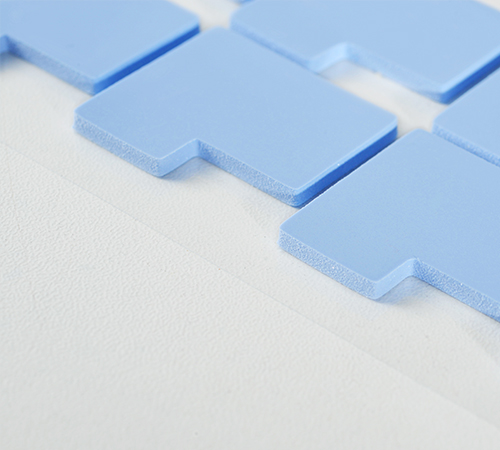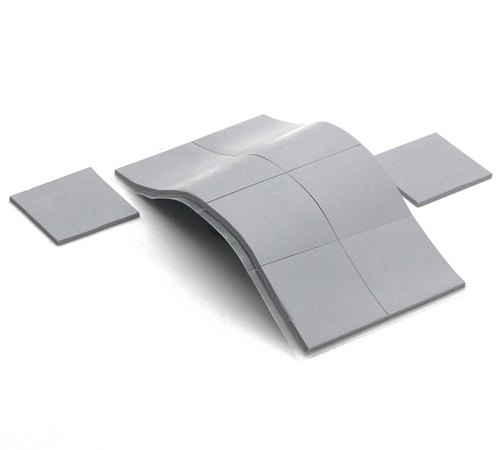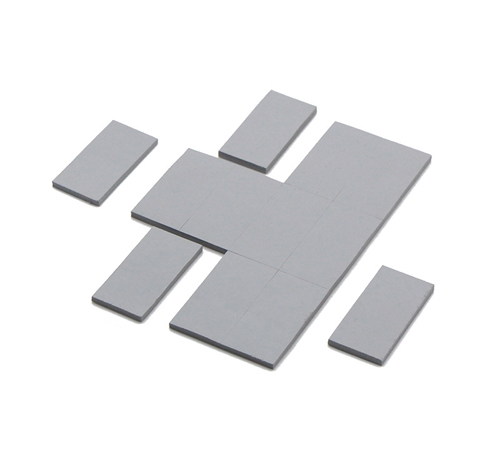PTC (Positive Temperature Coefficient) heating elements, as self-regulating heating components, are widely used in household appliances, medical equipment, automotive electronics, and industrial heating. Their key feature is that their resistance increases rapidly with temperature, effectively controlling the heating temperature and achieving automatic constant temperature. In the design and use of PTC heating elements, thermal gap pads play an indispensable role as a crucial auxiliary material.
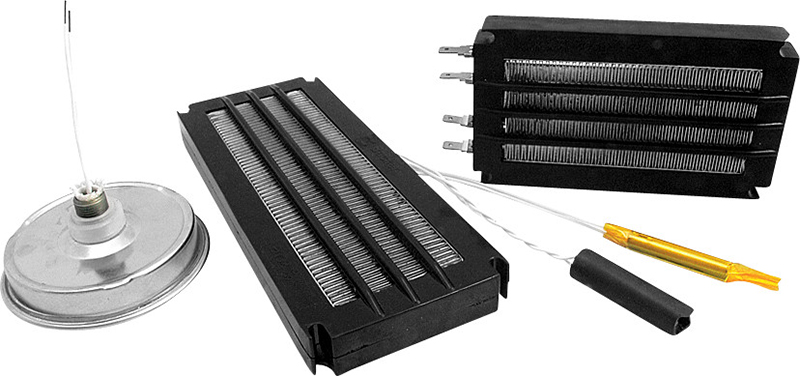
Overview of Thermal Gap Pads
Thermal gap pads are flexible thermal materials composed of a silicone matrix and thermal conductive fillers. They possess excellent thermal conductivity, high-temperature resistance, and electrical insulation, along with outstanding flexibility and compressibility. These characteristics enable thermal gap pads to ensure effective heat transfer and reduce thermal stress on electronic components in demanding working environments.

Principles and Structure of PTC Heating Elements
PTC heating elements are self-regulating heating components that utilize the positive temperature coefficient characteristic of materials, where resistance increases with temperature. Their typical structure includes PTC material, metal electrodes, and an insulating layer. When powered, the resistance of the PTC material increases with rising temperature, thereby limiting current and achieving self-regulating temperature control. PTC heating elements are widely used in devices such as heaters, heating cushions, and industrial heaters due to their high safety and efficiency.
Key Roles of Thermal Gap Pads in PTC Heating Elements
● Heat Conduction and Thermal Management:
In PTC heating elements, the PTC material generates significant heat during operation, which needs to be dissipated quickly to avoid localized overheating. Thermal gap pads, as an intermediary, fill the micro-gaps between the PTC heating element and the heat sink or housing, ensuring rapid heat transfer from the PTC material to the heat sink and improving overall thermal management. This efficient heat management not only extends the lifespan of the PTC heating element but also enhances the stability of the device.
● Electrical Insulation Protection:
In addition to thermal conductivity, thermal gap pads offer excellent electrical insulation. This characteristic is crucial in the application of PTC heating elements. Since PTC materials operate with electrical power, a lack of electrical insulation in the thermal medium could lead to short circuits or other electrical safety issues. The electrical insulation properties of thermal gap pads effectively prevent such risks, ensuring the electrical safety of the system.
● Vibration Damping and Stress Relief:
During operation, PTC heating elements may generate mechanical stress due to thermal expansion and contraction. The flexibility and compressibility of thermal gap pads effectively cushion this stress, reducing mechanical damage between components. Additionally, thermal gap pads can absorb vibrations to some extent, further improving the reliability of the PTC heating element system.
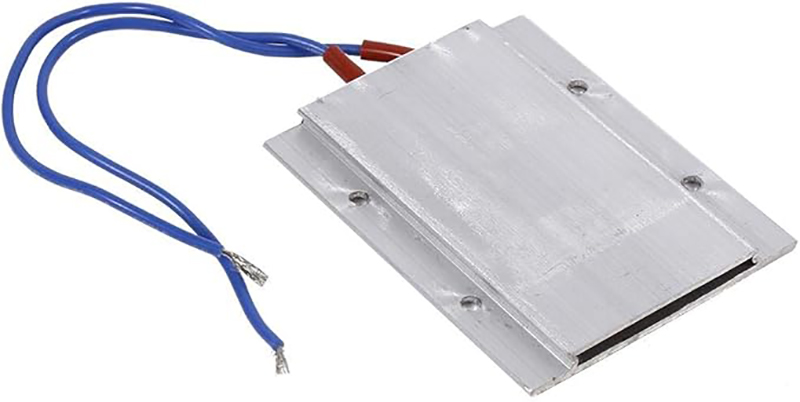
Application Cases
● Household Appliances:
In household appliances like heaters and air conditioners, PTC heating elements are widely used in auxiliary heating systems. Thermal gap pads play a crucial role in enhancing heating efficiency, insulation, sealing, and durability. For instance, in auxiliary heating modules of air conditioners, thermal gap pads closely bond the PTC heating element with heat dissipation fins, ensuring efficient heat transfer to the indoor space while preventing electrical safety hazards.
● Medical Equipment:
In the medical equipment sector, PTC heating elements are commonly used in temperature control systems, such as warming beds and therapy devices. Thermal gap pads not only ensure rapid heat transfer but also provide reliable safety protection for medical devices through their excellent insulation properties. Additionally, their vibration damping and sealing performance contribute to extending the lifespan of the equipment.
● Automotive Electronics:
In automotive electronics, PTC heating elements are widely used in seat heating, steering wheel heating, and other functions. As a bridge between the PTC heating element and automotive metal components, thermal gap pads enhance heating efficiency and prevent moisture and dust from compromising the heating system, ensuring the stability and reliability of the automotive heating functions.
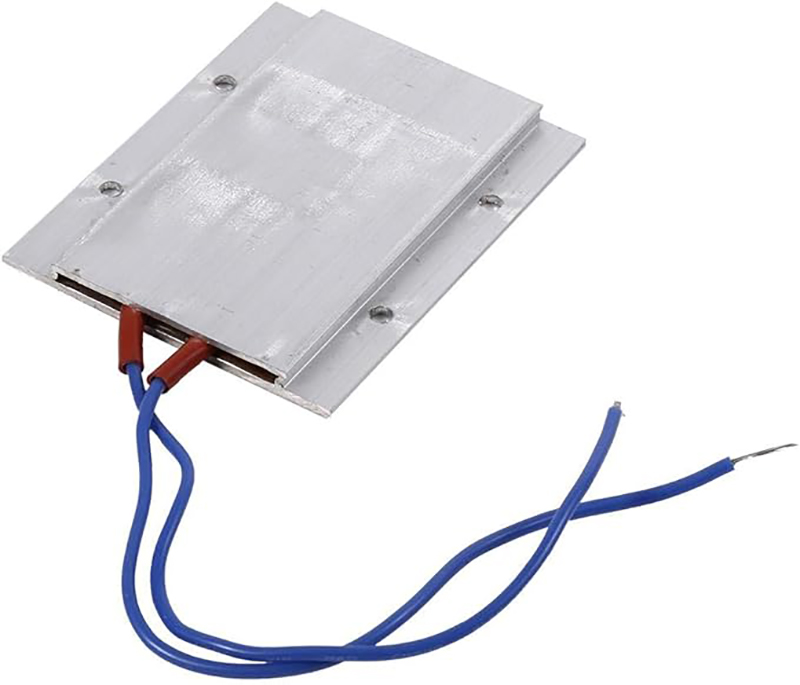
Selection and Application Considerations for Thermal Gap Pads
In practical applications, selecting the appropriate thermal gap pad is crucial. First, it is essential to choose a pad with the right thermal conductivity and temperature resistance based on the operating temperature range of the PTC heating element. Second, ensure that the thickness and compression rate of the thermal gap pad meet the design requirements of the equipment to achieve optimal heat transfer. Additionally, attention should be given to the long-term stability and durability of the thermal gap pad to maintain its performance over extended operation.
Conclusion
The application of thermal gap pads in PTC heating elements not only enhances thermal management efficiency and ensures stable operation of the equipment but also plays a significant role in electrical safety and mechanical protection. As the demand for heat dissipation in electronic devices continues to increase, thermal gap pads will become increasingly important in PTC heating elements and other thermal management applications. With advancements in material science, the performance of thermal gap pads will further improve, providing more efficient and safe thermal management solutions for PTC heating elements and other devices.
 CN >
CN >
